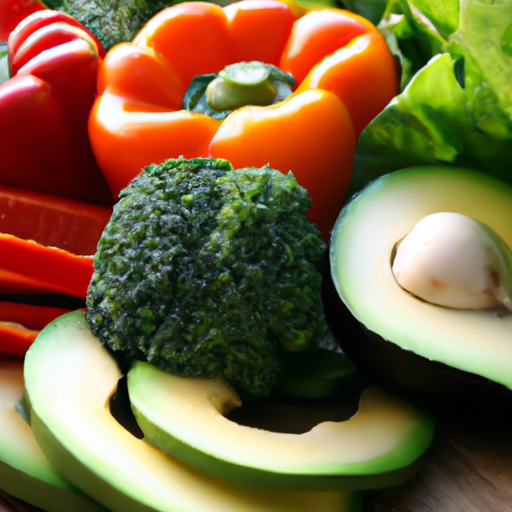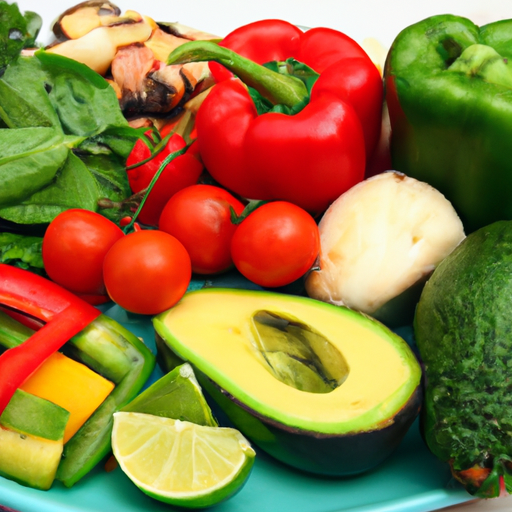So, have you heard about this thing called the Keto diet? It seems like everyone is talking about it these days. But what exactly is it and how does it work? Well, let me break it down for you.
The Keto diet, short for ketogenic diet, is a high-fat, low-carb eating plan that has been gaining popularity recently. The main idea behind it is to switch your body’s primary source of fuel from carbs to fats. By drastically reducing your carbohydrate intake and increasing your fat consumption, your body enters a metabolic state called ketosis. In ketosis, your body starts producing molecules called ketones, which are then used as fuel instead of glucose.
Now, you might be wondering why anyone would want to do this. Well, there are a few reasons. The Keto diet has been proven to help with weight loss, as it can effectively reduce your appetite and increase your metabolism. It also has benefits for your brain health, as ketones are a more efficient source of energy for your brain compared to glucose. And some people even claim that the Keto diet helps with certain medical conditions like diabetes or epilepsy.
In this article, we’ll dive deeper into the science behind the Keto diet, discuss its potential benefits and risks, and give you some tips on how to get started if you’re interested. So, if you’re curious to learn more about the Keto diet and whether it’s the right fit for you, keep reading!

What is the Keto Diet?
Understanding the Basics of the Keto Diet
The Keto diet, short for Ketogenic diet, is a low-carbohydrate, high-fat diet that has gained popularity in recent years. The main principle of this diet is to get your body into a state of ketosis, where it burns fat for fuel instead of carbohydrates. This is achieved by drastically reducing your carbohydrate intake and increasing your fat consumption.
The History of the Keto Diet
The Keto diet was initially developed in the 1920s as a treatment for epilepsy. Researchers found that by reducing carbohydrates and increasing fat intake, they could reduce the frequency and severity of seizures in patients with epilepsy. However, as new anticonvulsant drugs were introduced, the use of the Keto diet for epilepsy diminished. It wasn’t until the 1990s that the diet regained popularity, primarily for its weight loss benefits.
How Does the Keto Diet Work?
When you follow a typical Western diet, your body primarily burns carbohydrates for energy. Carbohydrates are broken down into glucose, which is then used by the cells as a source of fuel. However, when you drastically reduce your carbohydrate intake, your body is forced to find an alternative energy source. This is where the Keto diet comes in.
By significantly reducing your carbohydrate intake, you deplete your body’s glycogen stores. When glycogen levels are low, your body starts breaking down fat into molecules called ketones. These ketones can be used as an energy source by the brain and other organs. In essence, the Keto diet forces your body to switch from using glucose as its primary energy source to using fat.
Benefits of the Keto Diet
One of the main benefits of the Keto diet is weight loss. By reducing your carbohydrate intake and increasing fat consumption, you can effectively lose weight. When your body is in a state of ketosis, it becomes efficient at burning fat for fuel. This can lead to significant weight loss, especially in individuals who are obese or overweight.
In addition to weight loss, the Keto diet may also have other health benefits. Some studies suggest that the diet may help improve insulin sensitivity, reduce inflammation, and lower blood pressure and triglyceride levels. It may also have positive effects on certain medical conditions, such as type 2 diabetes, polycystic ovary syndrome (PCOS), and Alzheimer’s disease. However, more research is needed to fully understand the long-term effects of the Keto diet on these conditions.
Potential Risks and Side Effects of the Keto Diet
While the Keto diet can have numerous benefits, it’s important to be aware of the potential risks and side effects. One common side effect is known as the “Keto flu,” which occurs during the initial stages of the diet. Symptoms can include fatigue, dizziness, nausea, irritability, and headache. These symptoms usually subside after a few days as your body adjusts to using ketones for energy.
Another potential risk of the Keto diet is nutrient deficiencies. Since the diet restricts many high-carbohydrate foods, such as fruits, grains, and legumes, it can be challenging to get all the essential vitamins and minerals your body needs. It’s important to ensure you’re consuming a variety of nutrient-dense foods and consider supplementation if necessary.
Additionally, the high-fat nature of the Keto diet may raise concerns about heart health. While some studies suggest that the diet can improve markers of cardiovascular health, others have shown an increase in LDL cholesterol levels. If you have a history of heart disease or high cholesterol, it’s essential to consult with a healthcare professional before starting a Keto diet.
Different Types of Keto Diet
There are several variations of the Keto diet, each with slightly different macronutrient ratios. The standard Keto diet typically consists of 75% fat, 20% protein, and 5% carbohydrates. However, there are other versions, such as the cyclical Keto diet, targeted Keto diet, and high-protein Keto diet, which modify these ratios to suit different needs and goals. It’s important to choose a version of the diet that aligns with your individual preferences and health goals.
Foods to Eat on the Keto Diet
When following the Keto diet, it’s important to choose foods that are high in fat and low in carbohydrates. Some of the best food choices include:
- Meats: Beef, poultry, pork, and lamb
- Fish and seafood: Salmon, tuna, shrimp, and shellfish
- Eggs: A staple of the Keto diet
- High-fat dairy: Butter, cheese, and cream
- Nuts and seeds: Almonds, walnuts, chia seeds, and flaxseeds
- Healthy oils: Olive oil, coconut oil, and avocado oil
- Low-carbohydrate vegetables: Leafy greens, cruciferous vegetables, and peppers
Foods to Avoid on the Keto Diet
On the Keto diet, you’ll need to avoid or limit foods that are high in carbohydrates. Some foods to avoid include:
- Grains: Wheat, rice, oats, and barley
- Sugar: Avoid all forms of sugar, including table sugar, honey, maple syrup, and agave nectar
- Fruits: Most fruits are high in carbohydrates and should be limited on the Keto diet
- Starchy vegetables: Potatoes, corn, peas, and sweet potatoes
- Legumes: Beans, lentils, and chickpeas
- Sugary beverages: Soda, fruit juice, and sports drinks
- Processed foods: Many processed foods contain hidden carbohydrates and should be avoided
Meal Planning on the Keto Diet
Meal planning is an essential aspect of the Keto diet to ensure you’re meeting your macronutrient goals and getting a variety of nutrients. When planning your meals, focus on incorporating high-quality fats, moderate amounts of protein, and low-carbohydrate vegetables. Experiment with different recipes and meal combinations to keep your meals interesting and satisfying.
It can also be helpful to track your macronutrient intake using a food diary or mobile app. This can help you stay on track and make adjustments if needed. Remember to listen to your body and adjust your meal plan based on your individual needs and goals.
Tips for Success on the Keto Diet
To be successful on the Keto diet, it’s important to keep a few tips in mind:
-
Stay hydrated: Drinking enough water is crucial for maintaining overall health on the Keto diet. Aim for at least eight cups of water per day.
-
Be mindful of electrolytes: When you reduce your carbohydrate intake, your body excretes more water and electrolytes. Consider increasing your intake of sodium, potassium, and magnesium to prevent electrolyte imbalances.
-
Plan and prepare your meals: Having Keto-friendly foods readily available can help you stay on track and avoid making impulsive food choices.
-
Be patient with your body: It may take some time for your body to adapt to the Keto diet. Give yourself a few weeks to adjust before expecting significant weight loss or other changes.
-
Seek support: If you’re struggling with the Keto diet, consider joining a support group or seeking guidance from a registered dietitian who specializes in the Keto diet.
Conclusion
The Keto diet is a low-carbohydrate, high-fat diet that can be an effective tool for weight loss and potential health benefits. By understanding the basics of the diet, its history, and how it works, you can determine if it’s the right approach for you. Remember to consult with a healthcare professional before starting any new diet and listen to your body’s needs throughout your Keto journey. With careful planning, dedication, and patience, the Keto diet can be a successful way to achieve your health and weight loss goals.
